Textile products list
There are establishments in the textile, textile products, and garment manufacturing industries that turn fiber into yarn, yarn into fabric, and fabric into garment and other textile products.
i. Azlon
ii.
Bombazine
iii.
Brocade
iv.
Calico
v.
Cambric
vi.
Camel hair
vii.
Canvas
viii.
Cashmere
ix.
Cheviot
x.
Chiffon
xi.
Chintz
xii.
Corduroy
xiii.
Cotton
xiv.
Crash
xv.
Crepe
xvi.
Crepe de Chine
xvii.
Cretonne
xviii.
Damask
xix.
Delaine
xx.
Denim
xxi.
Dimity
xxii.
Duck
xxiii.
Flannel
xxiv.
Flax
xxv.
Foulard
xxvi.
Fustian
xxvii.
Gabardine
xxviii.
Gauze
xxix.
Gingham
xxx.
Hemp
xxxi.
Holland
xxxii.
Horsehair
xxxiii.
Jamdani
xxxiv. Jute
xxxv.
Khaki
xxxvi.
Kimkhwāb
xxxvii.
Lace
xxxviii.
Linen
xxxix.
Mohair
xl.
Muslin
xli.
Nankeen
xlii.
Poplin
xliii.
Rabbit hair
xliv.
Rayon
xlv.
Reticella
xlvi.
Satin
xlvii.
Serge
xlviii.
Silk
xlix.
Taffeta
l.
Toile de Jouy
li.
Tweed
lii.
Twill
liii.
Velvet
liv.
Velveteen
lv.
Wool
lvi.
Yarn
Types of fabrics with pictures and names
Azlon
Azlon
is a synthetic textile fiber made up of protein ingredients derived from
natural sources. It is made by converting raw materials like other synthetic
fibers into a solution that comes out through a hole in a device called a
spinneret and is then stretched to improve the alignment of the chain of
molecules that make fiber.
Bombazine
Bombazine is a textile, usually black in color,
with a silk warp and worsted weft or filling, woven in a plain, or twill weave.
Cheap grades are woven with a rayon warp and worsted or cotton weft. Bombazine
was originally made of silk and various colors, but the natural color gradually
became standardized under the garb of mourning and the main use of individuals
in religious orders. It was woven with silk warps and worsted wefts.
Brocade
Brocade is a textile, woven fabrics have a raised floral or sculptural design that is introduced during the weaving process, usually through jacquard attachments. The design, appearing only on the fabric face, is usually made into a satin or twill weave. The background can be twill, satin, or plain weave. Rich, fairly heavy fabrics are often used for evening wear, dresses, and upholstery.
Calico
Calico is a textile, the all-cotton fabric is woven plain, or tabby, knitting, and printing with simple designs in one or more colors. Calico originated in Calicut, India, in the 11th century, if not earlier, and in the 17th and 18th centuries, Calico was an important commodity between India and Europe. In the export trade, pleasing patterns in foreign flavors were used, but simple designs with small flowers and pinecones, diapers (all over), and geometric patterns for home use were the most popular. Gold tinseling was sometimes used to enhance the perfection of the material. Printed calico was commonly used for hanging and bedding, as well as for clothing in England, but in India, the material was usually used only for clothing. Saris, the most common article on Indian women's clothing, was almost always printed.
Canvas
Canvas is a stout cloth probably named after cannabis. Hemp and flax fiber have been used for centuries to produce cloth for flocks. Some classes are called sailcloth or canvas synonyms. After the introduction of the power loom, the canvas was made from a mixture of flax, hemp, tow, jute, cotton, and such fibers. Flax canvas is essential for double warp, as it is always intended to withstand pressure or rough use.
Cheviot
Cheviot fabric can be made from either woolen or worsted yarn according to the character, texture, and desired feel of the finished fabric. Some quality is produced from cross-bred worsted yarn which is adapted to decorate the crisp. Cheviot suits for sportswear are made from the worsted yarn of hard spun and are also made from some botanicals. Cheviot shirting is a stiff, twilled, cotton fabric woven with small geometric patterns or warp stripes and bleached weft. Some low-quality suits containing cotton blends, and others of a lower class, weighted with sails, are inappropriately called cheviot.
Chiffon
Chiffon is a textile, lightweight, sheer fabric of plain weave, usually one of silk or synthetic fibers. Although delicate in appearance, it is a relatively strong, balanced fabric and can be dyed or printed for use in clothing, millinery, scarves, and lampshades. The term chiffon is also used as a modifier to mean light or softly draping condition - e.g., chiffon velvet and chiffon taffeta. Chiffon is a bleached cotton shorting in Romania. In Germany and Austria, it is a stiff, delicate, plain woven linen fabric with a smooth finish, used to make shirts and underwear.
Corduroy
Corduroy is a textile, made of strong durable fabric cut-pile yarn with a round cord, ribs, or wale surface. The back of the products has a plain or twill weave. Corduroy is made from any major textile fiber and with one warp and two fillings. After it is woven, the back of the cloth is coated with glue; Floats of pile yarn are then cut in their center. Glue prevents the filling of the product during cutting. The glue is removed from the face, which is subsequently brushed continuously.
Crepe
The fabric is usually woven with crepe yarn, a hard-twist yarn that is produced with more twists per inch than ordinary yarn or with alternate "S" and "Z" twists. The twist of the yarn in the "S" twist corresponds to the center of the letter "S"; The similarity in the "Z" twist is with the center of the letter "Z"; These are sometimes referred to as left-hand and right-hand twists. One way to enhance the yarn float from one to three is to leave certain risers present in the plain weaves. Fabrics are woven from all major fibers, natural or man-made. Surface textures range from delicate, flat crepes to pebbled and mossy effects; Some surfaces are like tree bark. Popular crepes include canton, crepe-back satin, crepe de chine, georgette, marocain, faille, underwear, mossy, romaine, and rough.
Damask
Damask is a patterned textile, that derives its name from the finely patterned fabrics produced in Damascus during the European Middle Ages. True damask was originally made entirely of silk, but gradually the name was applied to a certain type of patterned fabric regardless of the fiber. Each of the single damasks is woven into warps and wefts, or fillings, and perhaps one or two colors; The amount of a compound or double damask is higher. Damask is woven into a jacquard loom, and the satin field is produced by floating floats that go from two to seven and in some cases, nine fillings. The design consists of plain or taffeta weaving, warp, and filling at right angles that create less luster than the satin area.
Denim
Denim is a durable twill-woven fabric with colored warp and white filling thread; It is woven in colorful stripes. The name is said to have originated from the French Serge de Nimes. Denim yarn-dyed and mill-finished and usually all-cotton, although a sufficient amount of cotton-synthetic fiber blend. Decades of use in the garment industry, especially in making overalls and trousers worn for heavy labor, have shown the durability of denim. This quality-made denim was serviceable for leisurewear in the late twentieth century.
Dimity
Dimity is a lightweight, sheer cotton fabric with which two or more warp threads are thrown, forming fine cords. Originally dimity was made of silk or wool, but since the 18th century, it has been woven almost exclusively of cotton. The name was applied to two types of corded cotton: bedcovers, draperies, and the like, heavy material and lightweight, almost sheer fabric made of either corded or check effect.
Flax
Flax is a plant of the Linaceae family, which is the fiber from which linen yarn and cloth are made, and for its nutritious seeds, called flaxseed or linseed, from which linseed oil is obtained. Flax fiber is extracted from the lower part of the top of the flax stem. It is soft, shiny, and flexible; Fiber bundles have the appearance of blonde hair, hence the description of “flaxen” hair. It is stronger but less elastic than cotton fiber. Although flax has lost some of its value as a commercial fiber crop due to the availability of synthetic fiber, flaxseed has gained popularity as healthy food and flax is economically important in several countries around the world, including China, Russia, and Canada.
Gabardine
Gabardine was originally a type of waterproof cloth used to make raincoats. A fabric with a completely open and very light texture, made entirely of silk, is called silk or voile, or gabardine. Gabardine is one of the worsted, cotton, silk, and mixed tightly woven fabrics of any variety, made in general and mainly in suits and overcoats. It is a relatively strong and sturdy fabric, made with a twill weave, and somewhat similar to whipcord but with a lighter texture. The weft, or filling, is located entirely at the back and is therefore not visible from the front, a situation that allows inferior quality filling without loss of durability, as only the warp surface is exposed to wear.
Hemp
Hemp is a hard, fragrant, steep annual herb. The thin cane-like stalks are empty without tip and base. The leaves are palmate shape compounds and the flowers are small and greenish-yellow. It originated in Central Asia. Hemp cultivation for fiber was recorded in China in 2800 BC and was practiced in the Mediterranean countries of Europe at the beginning of the Christian era, which spread to the rest of Europe in the Middle Ages. The fibers are obtained from the stalks under a series of activities - including ratings, drying, and crushing - and a shaking process that completes the separation from the wood part, leaving long, fairly straight fibers or lines. It is strong and durable and is used for cordage - e.g., twine, yarn, rope, cable, and string - and for synthetic sponges and thick fabrics such as sacking and canvas.
Lace
Lace is a decorative, openwork fabric made up of looping, interlacing, braiding, or yarn twisting. The dividing line between lace and embroidery, an ornament that has already been added to the finished fabric, is not easy to draw; Several places, such as Limerick and filet lace, can be said to be embroidered forms on more or less open fabrics. Fancy knitting, on the other hand, as much as decorative openwork fabric, is not generally considered lace, although in some museums it is so classified. Openwork fabrics made from loom are not considered lace.
Linen
Linen fiber, yarn, and cloth are made from flax plants. Flax is one of the oldest textile fibers used by humans; Evidence of its use has been found in the habitat of prehistoric lakes in Switzerland. Fine linen cloth has been discovered in ancient Egyptian tombs. Fiber plant stalks are obtained under a series of operations, including retting, drying, crushing, and beating. Linen is stronger than cotton, dries more quickly, and is more susceptible to exposure to sunlight. The low elasticity, providing a solid, smooth texture, makes linen a wrinkling subject.
Poplin
Poplin
is a strong fabric that is produced by a variety of ribs of plain weave and is
characterized by delicate, closely spaced, crosswise ribs. It is made of heavy-filling yarn and a large number of warp yarns and is similar to a broadcloth,
which has a finer, more closely spaced rib.
Rayon
Rayon is an artificial textile material made from regenerated and pure cellulose derived from plant sources. Developed as an alternative to silk in the late 19th century, rayon was the first man-made fiber. Rayon is described as regenerated fiber because cellulose obtained from softwood or short fibers attached to cotton seeds is converted into a liquid compound, compressed through a tiny hole in a device called a spinneret, and then converted back into cellulose to form a fiber.
Satin
Satin is any fabric that is made by the satin weaving method, it is one of the three basic textile weaving. The fabric is characterized by a smooth surface and usually has a bright face and dull back; It is made in a variety of weights for different uses, including clothing, especially evening wear, Lining, Bedspread, and upholstery. Originally a silk fabric, it is now made of other fibers. An all-cotton fabric woven into a satin structure is known as sateen.
Tweed
Tweed resembles a rough, woolen fabric, a soft, open, flexible texture, cheviot or homespun, but woven more closely. It is usually woven with a plain weave, twill, or herringbone structure. The color effect can be obtained by mixing colored wool before spinning the yarn.
Twill
Twill is one of the three basic textile weaves, a fabric made with a diagonal rib, ridge, or wale. In regular twill, the diagonal line is repeated regularly, usually moving from left to right at an angle of 45°. Weaves can be varied in a variety of ways, for example, by changing the direction of the twill line or its angle. The smallest twill is one of the most popular weaves worn by men.
Velvet
In
textiles, velvet is a small, densely piled fabric, used in clothing and
upholstery. The word comes from the Middle French Velu, shaggy. Velvet is made
by weaving piles of silk, cotton, or synthetic fibers and is characterized by a
soft, low surface formed by clipped yarn. The wrong side of the fabric looks
smooth and the weave is employed. Velvets can be made water-resistant and
crush-resistant. These are sometimes patterned or embossed.



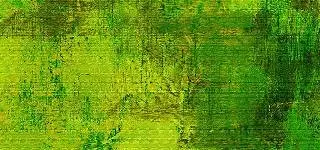
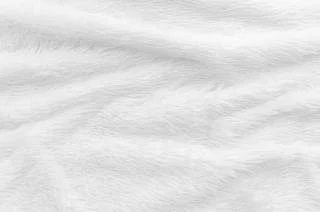
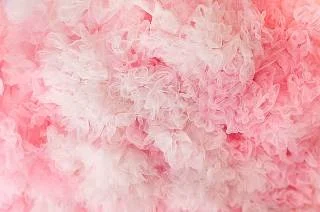



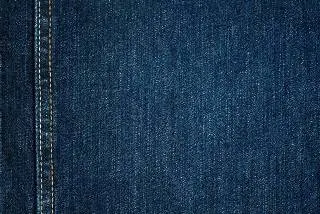
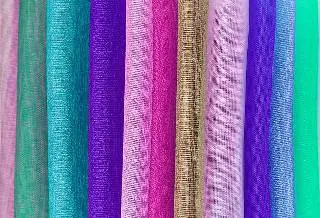



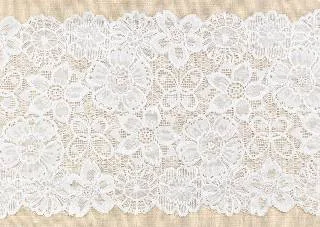



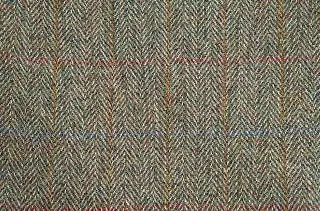










0 Comments